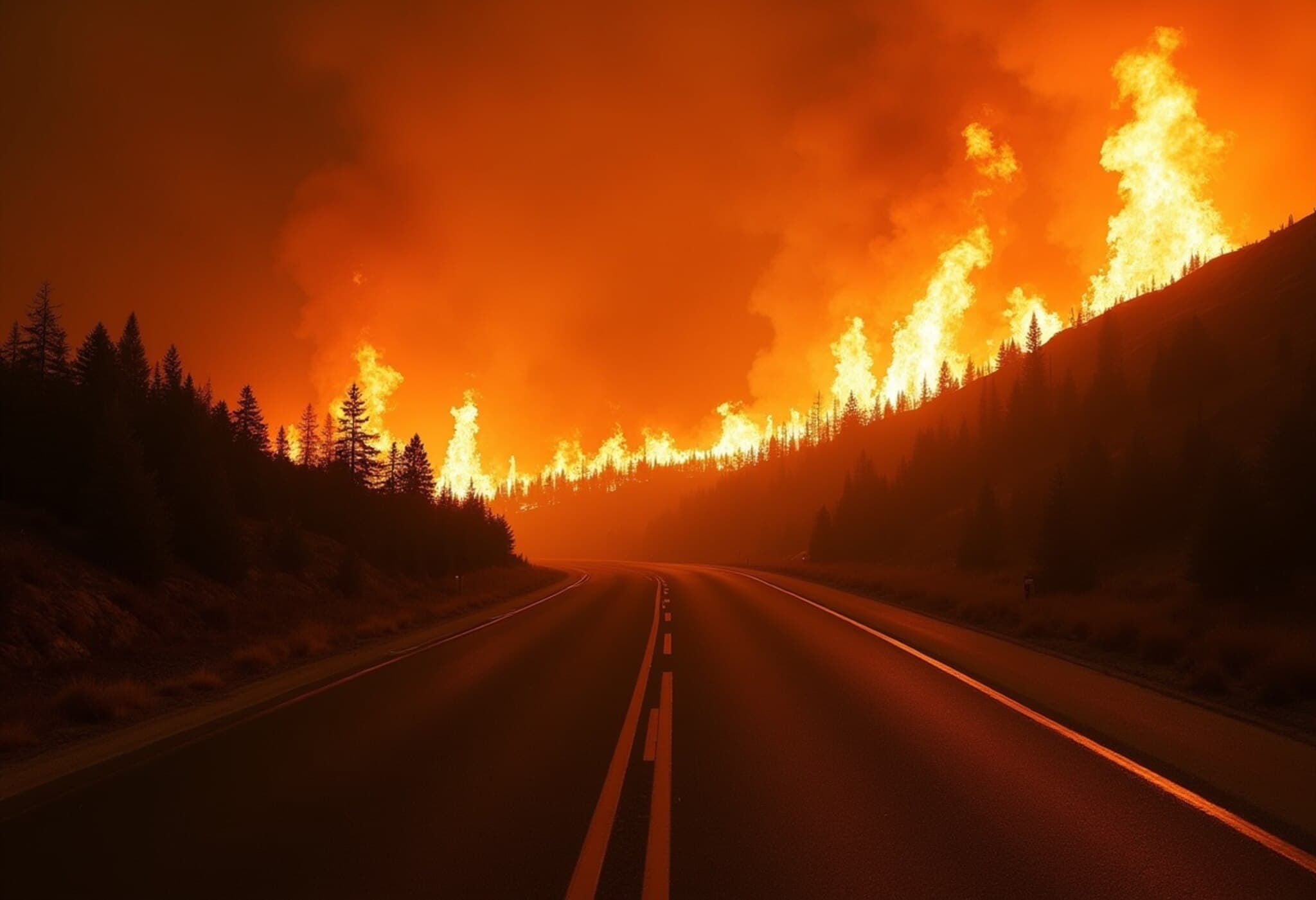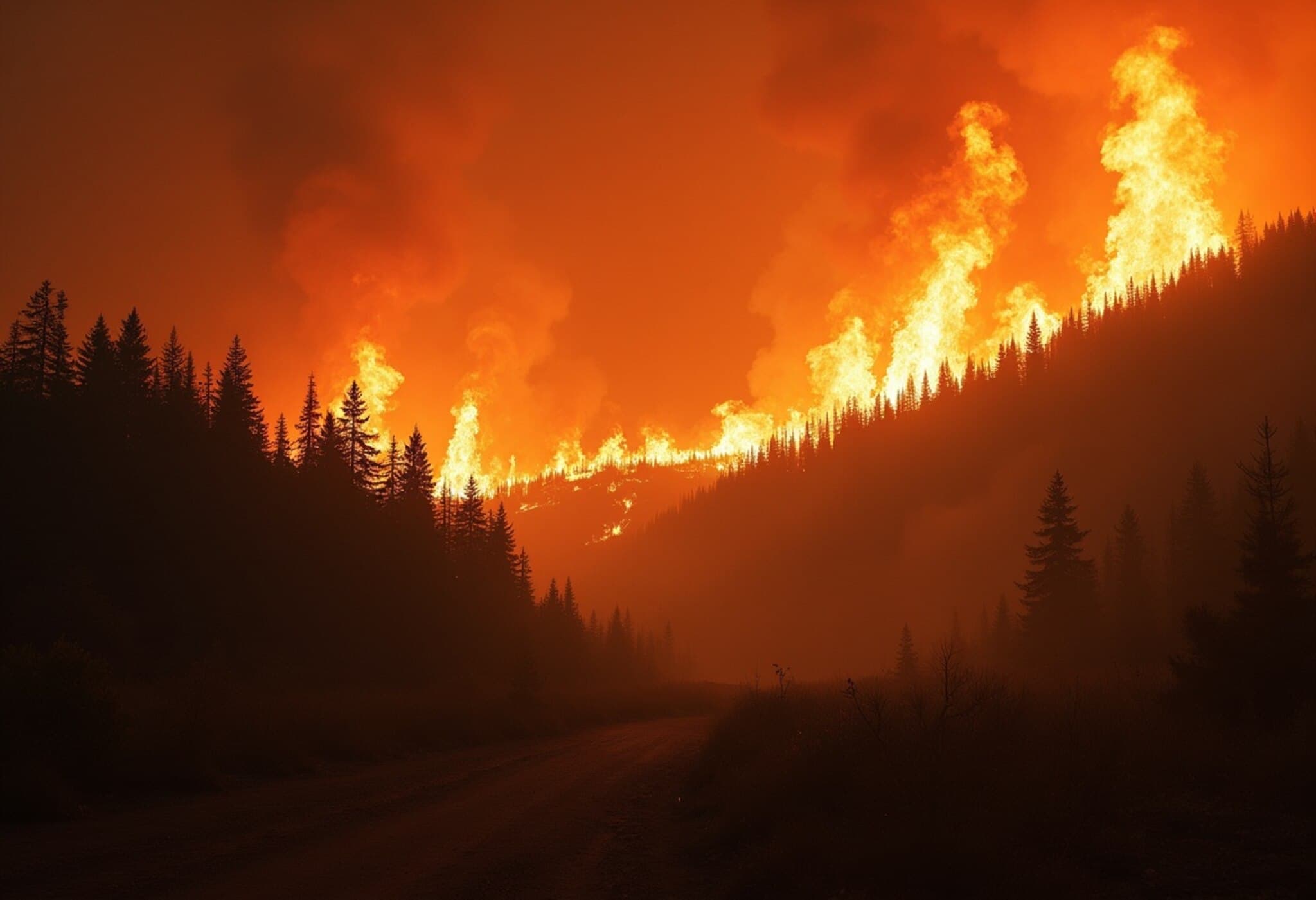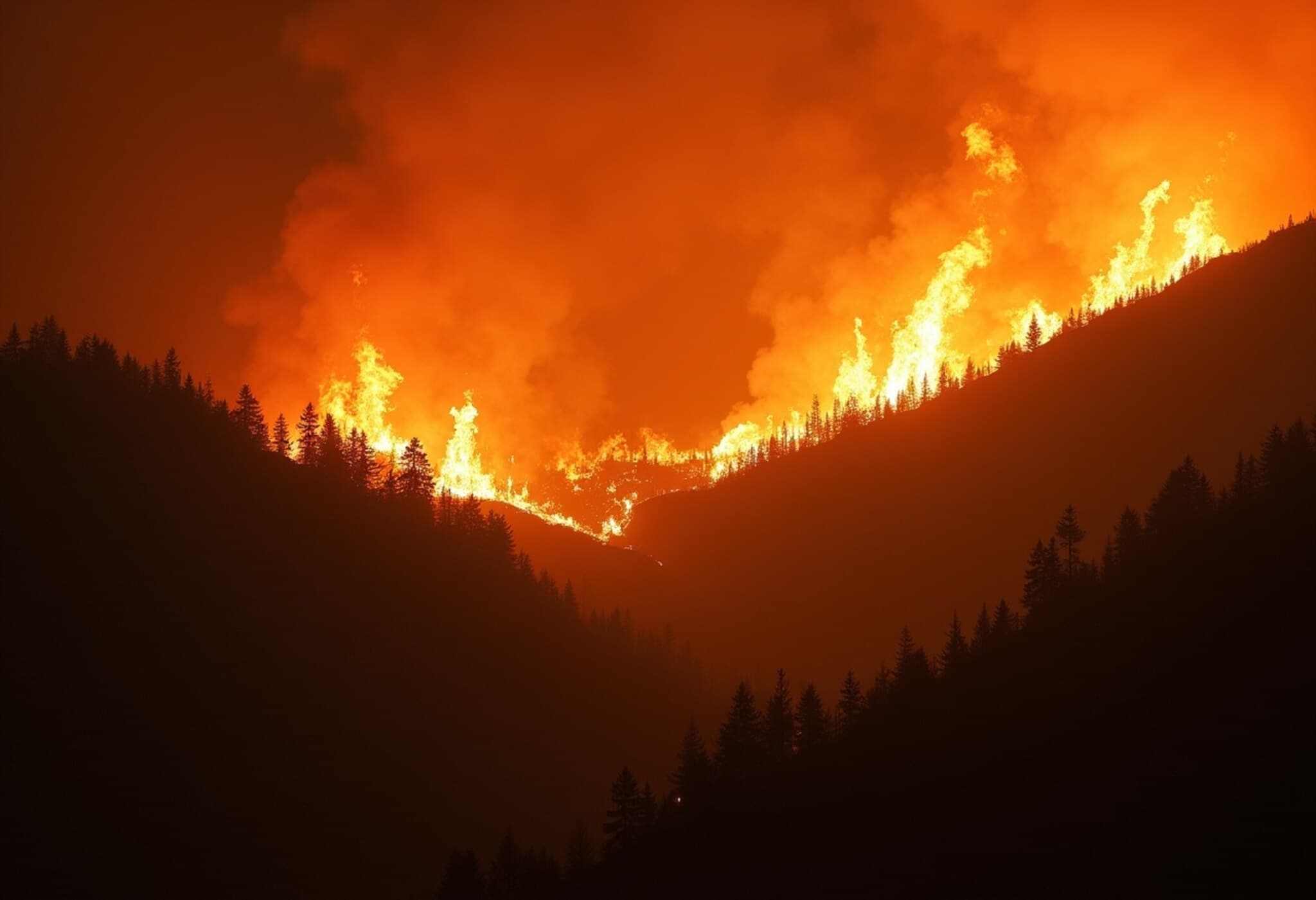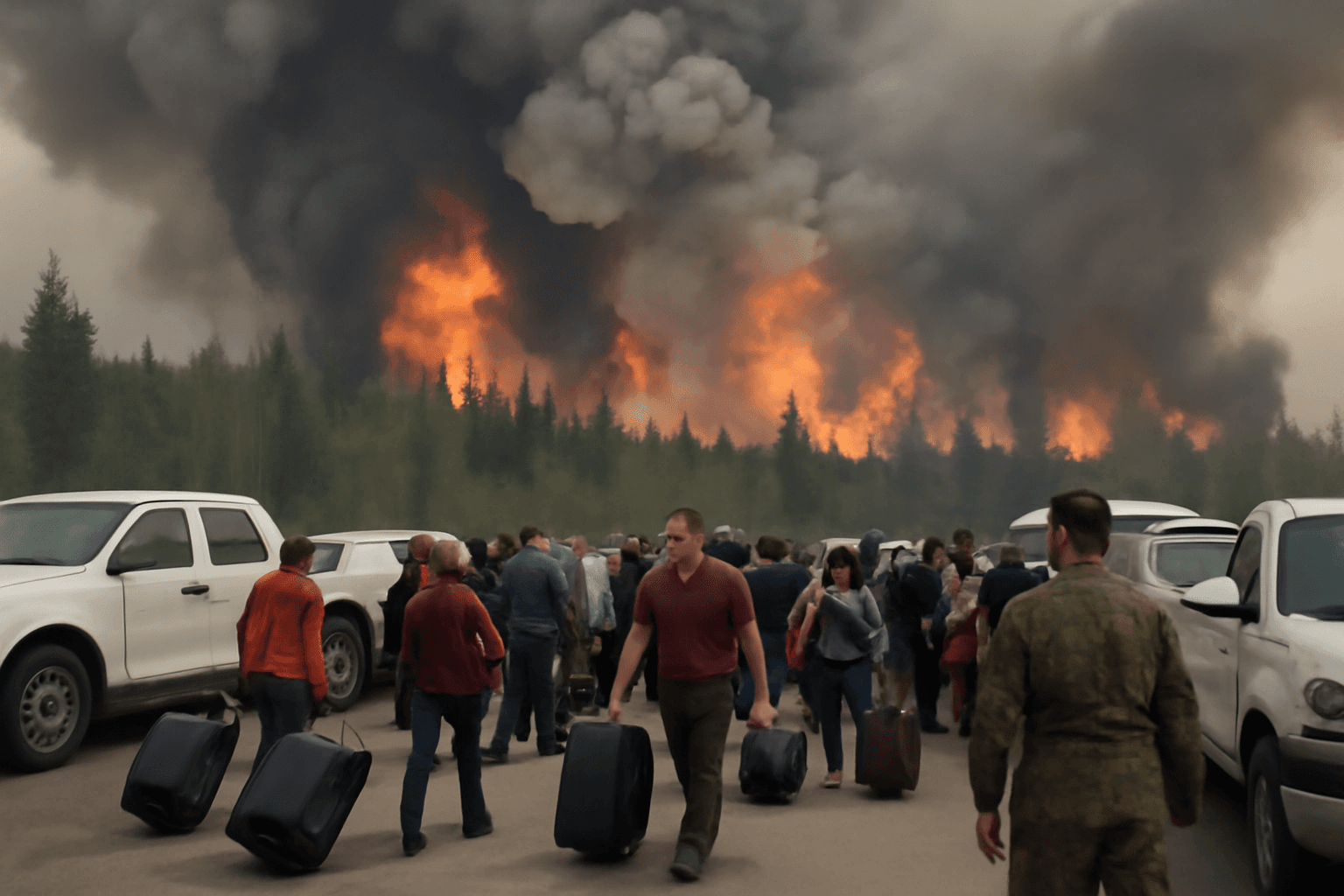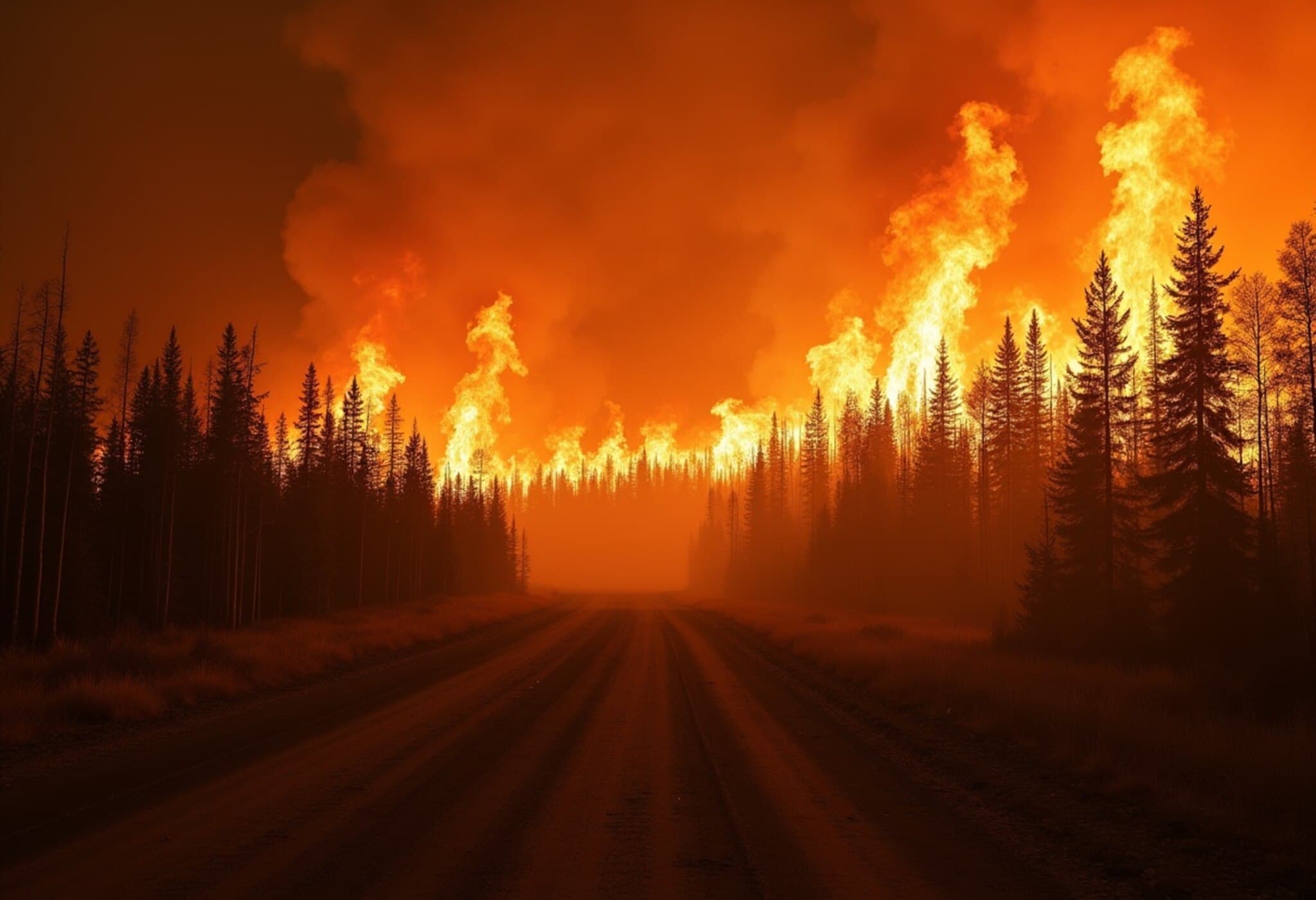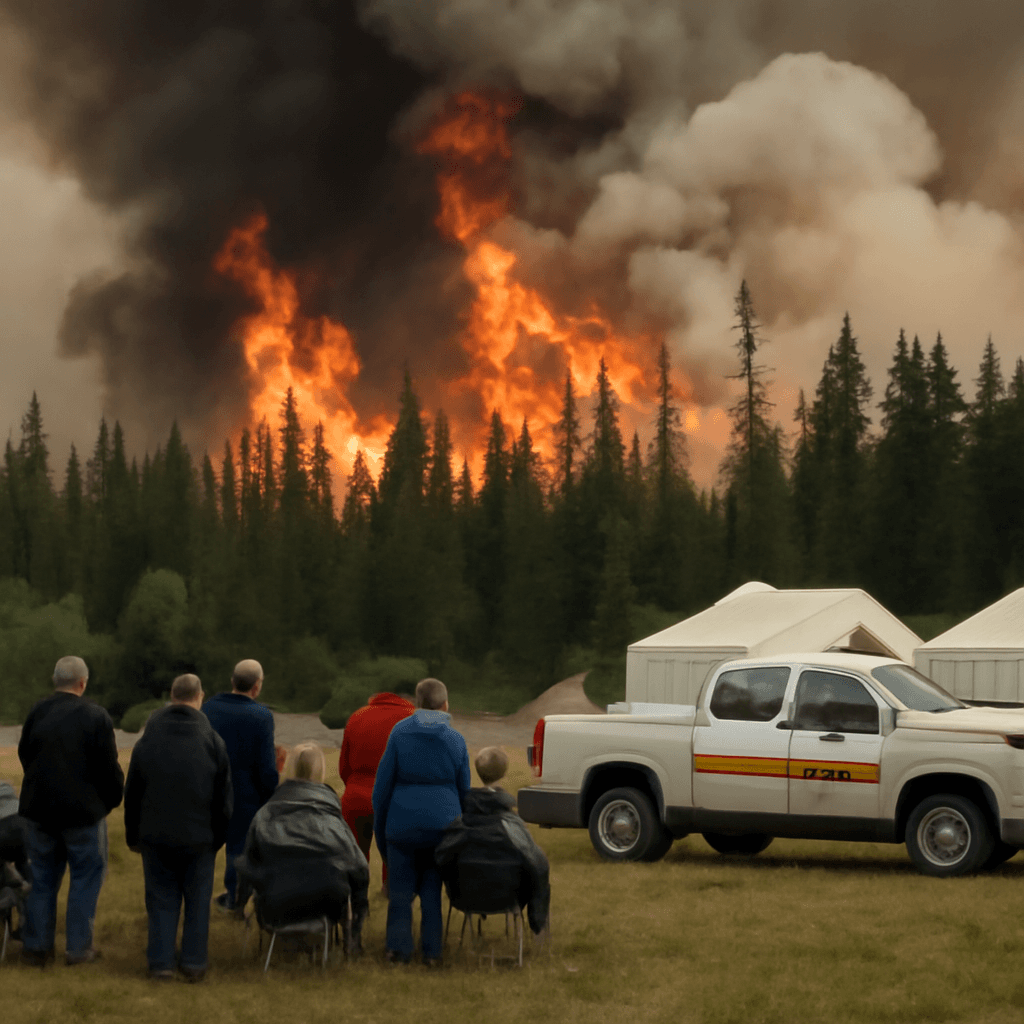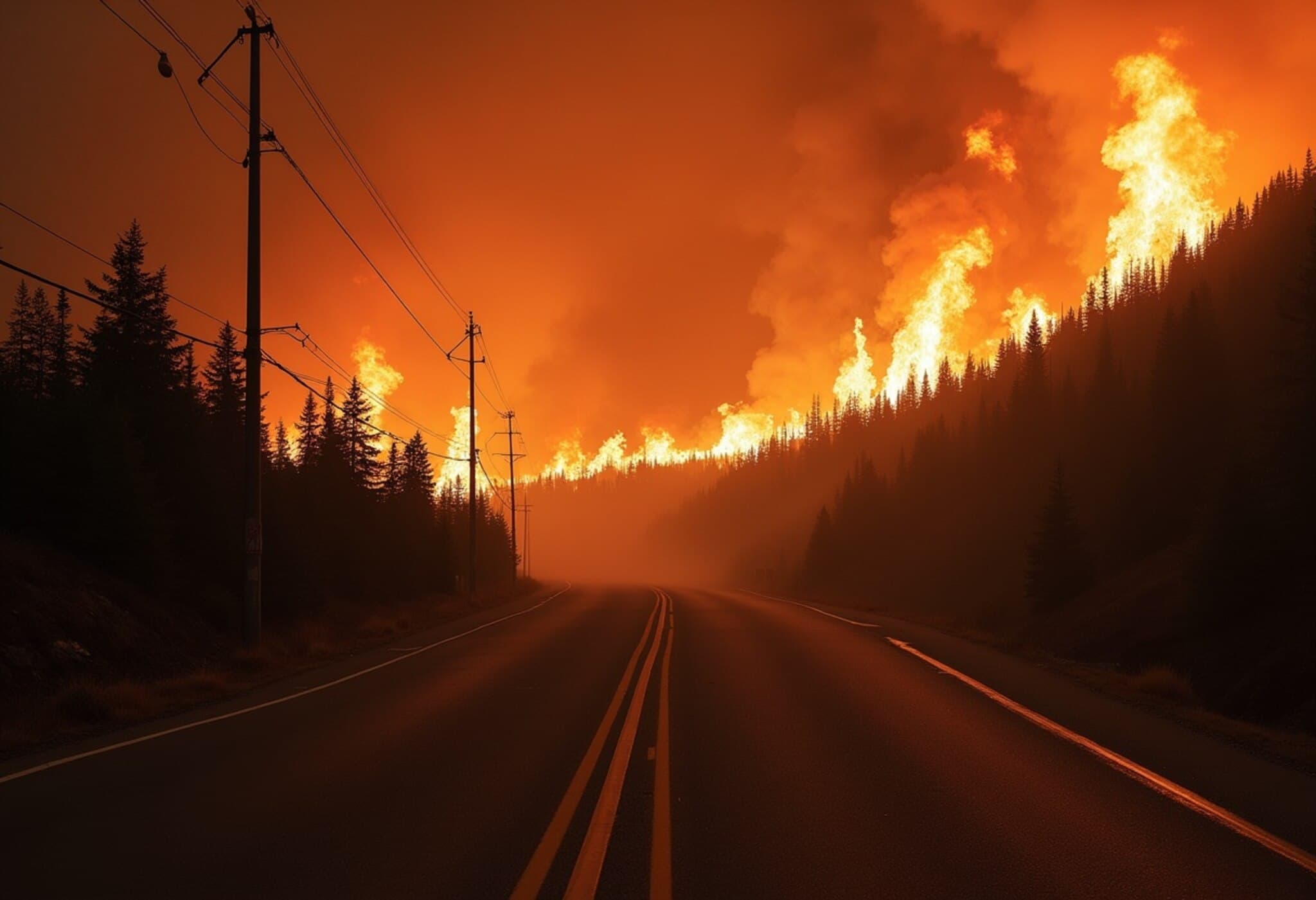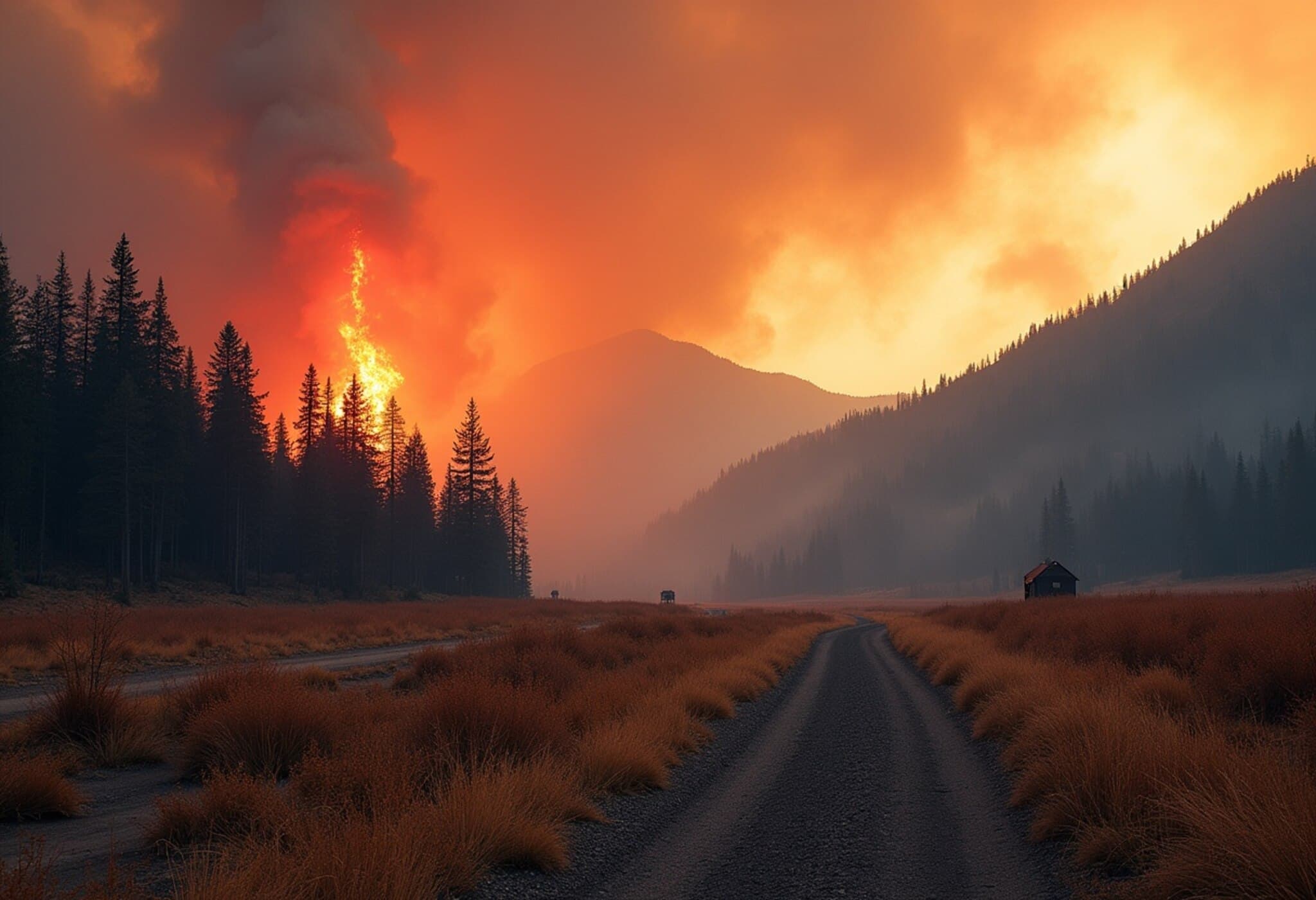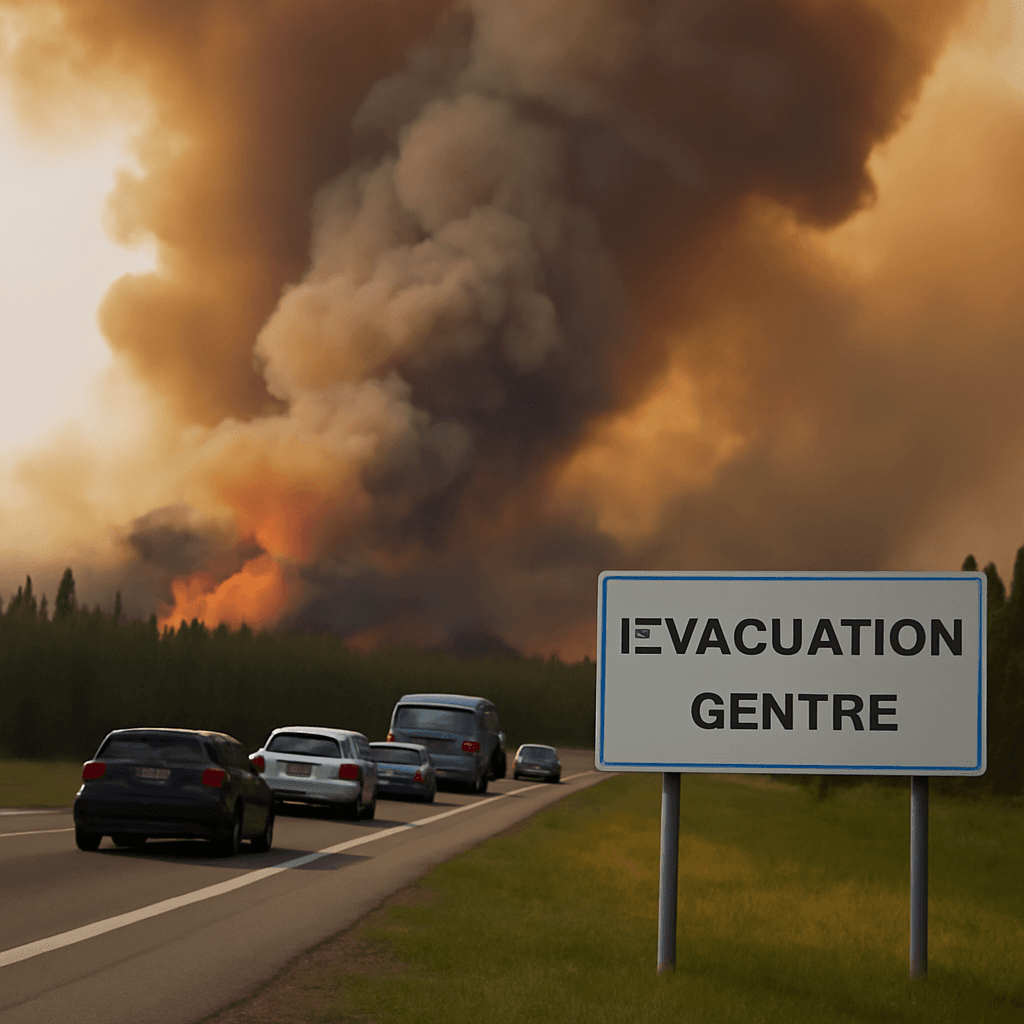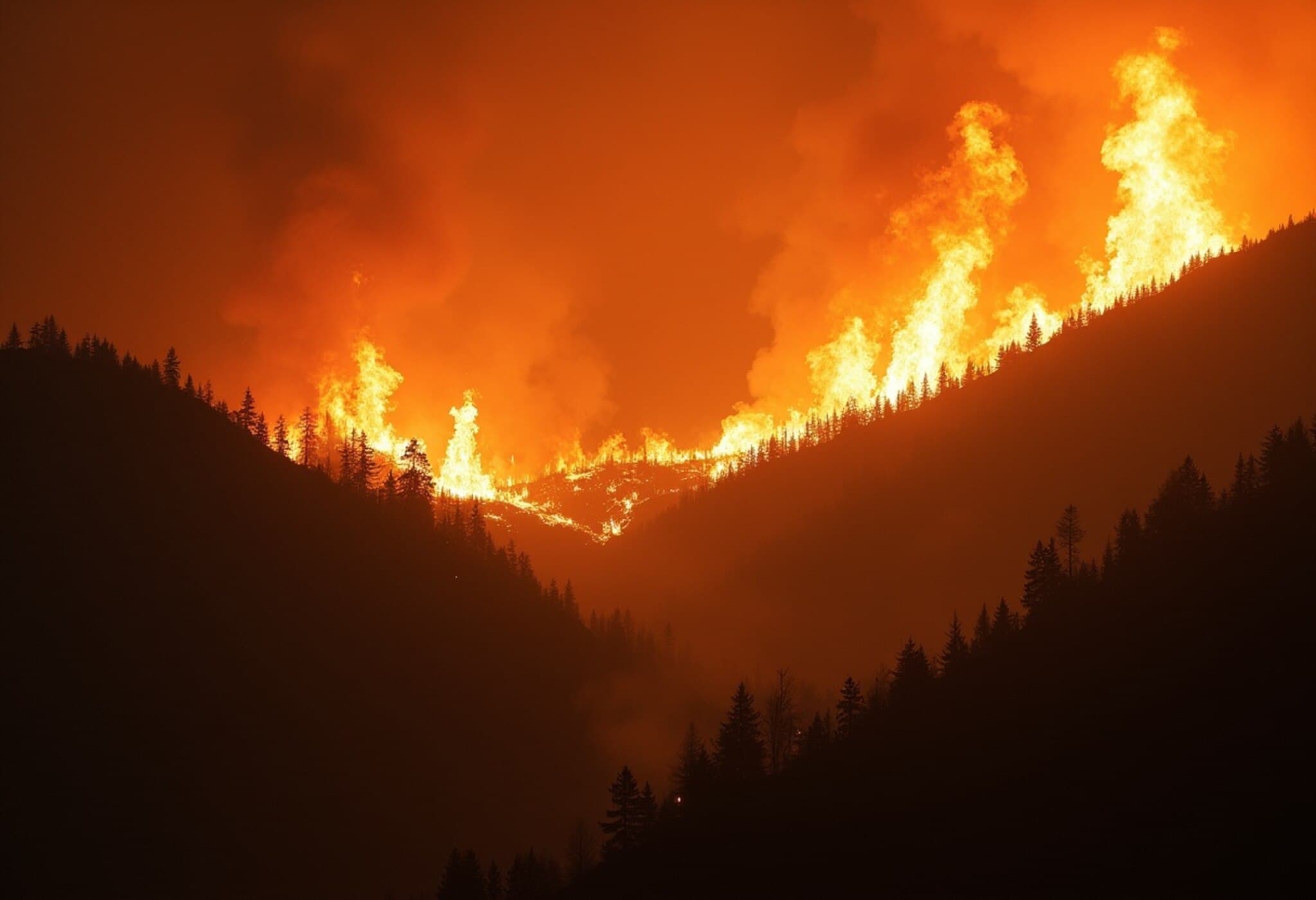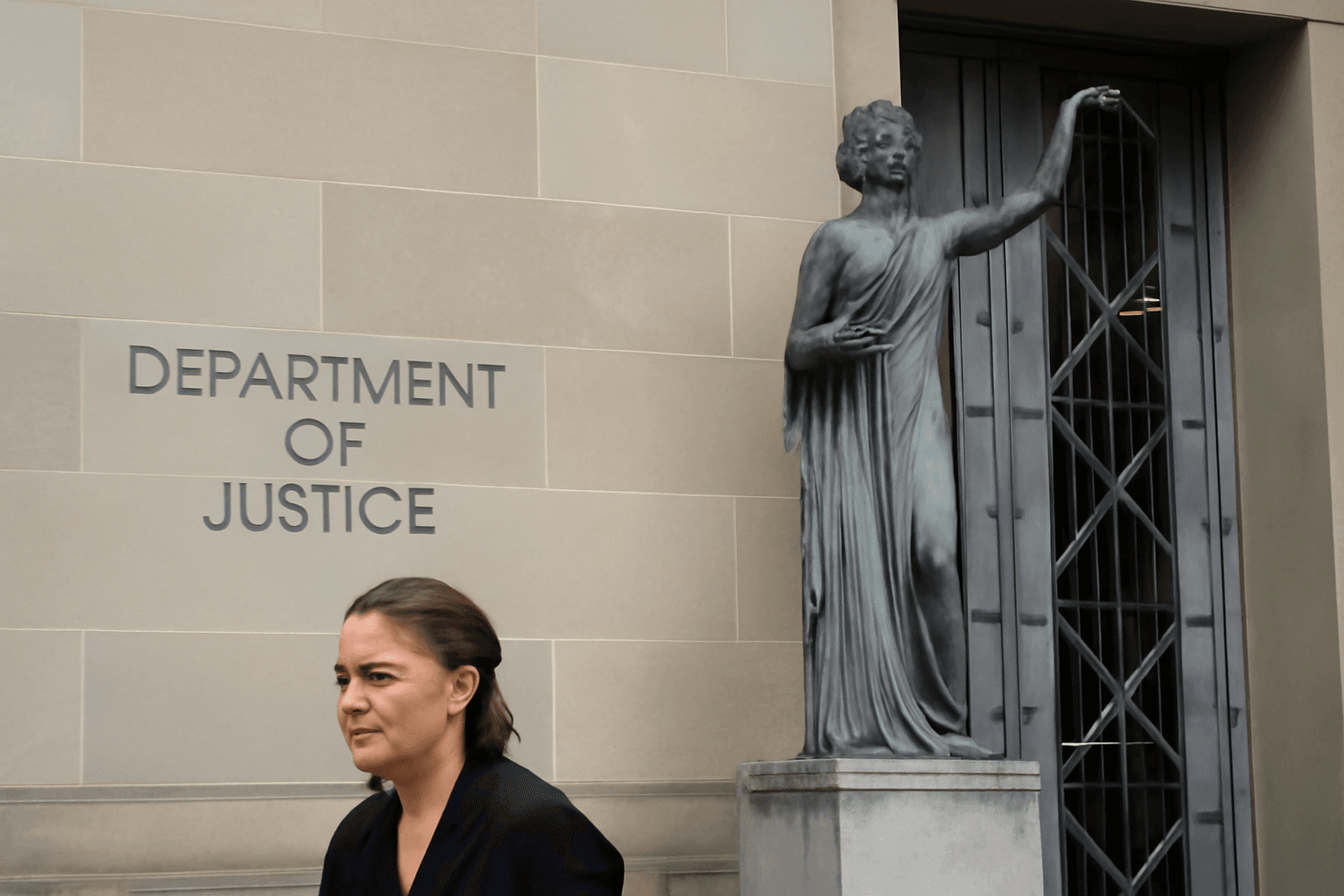Massive Wildfire Rages in Central California, Endangering Homes and Livelihoods
A sprawling wildfire blazed uncontrollably across central California on Monday, endangering nearly 450 structures and forcing a highway shutdown near Santa Maria. The sprawling Gifford Fire, which erupted in the Los Padres National Forest, has consumed over 100 square miles across Santa Barbara and San Luis Obispo counties, leaving a trail of destruction and uncertainty.
Human Toll and Emergency Response
At least three individuals sustained injuries during the fierce blaze. A motorist attempting to escape the flames suffered burns after exiting their vehicle, while two contract workers assisting firefighting efforts were hurt when their all-terrain vehicle overturned. Emergency responders continue fighting the fire under challenging conditions.
Geography and Cause: A Complex Challenge
The rugged terrain of the region, characterized by steep slopes dotted with native California live oaks and Sycamore trees, further complicates containment efforts. The area, known both for its agricultural productivity and prominent wine industry, lies about 65 miles northwest of Santa Barbara and 150 miles northwest of Los Angeles.
Officials trace the Gifford Fire back to a convergence of four smaller blazes that ignited near State Route 166 between Santa Maria and Bakersfield last Friday. Authorities report that these multiple ignition points enabled flames to spread rapidly in various directions, fueled by dry chaparral and erratic winds.
Community Impact and Firefighting Efforts
- Highway closures: Both directions of the highway east of Santa Maria have been closed to safeguard residents and facilitate emergency operations.
- Evacuations: Ranchers are evacuating cattle to protect livestock from advancing flames.
- Firefighting operations: More than 1,000 firefighters are actively battling the fire using aerial water drops and ground crews, striving to stay ahead of predicted wind gusts expected near dusk.
Expert Commentary: The Growing Threat of Wildfires in California
The Gifford Fire is emblematic of an increasing trend in large, devastating wildfires across California—driven by prolonged drought, changing climate conditions, and accumulated forest fuels. Experts within wildfire management caution that such fires strain local economies, displace communities, and underscore the urgent need for enhanced forest management and climate adaptation policies.
Additionally, legal and policy frameworks for land use, emergency preparedness, and resource allocation face growing scrutiny as residents and officials grapple with the cost and human toll of these disasters.
What Lies Ahead?
The cause of the fires remains under thorough investigation. As weather forecasts predict intensifying winds, firefighting teams brace for a critical period. The next 24 to 48 hours will be pivotal in determining containment success and limiting damage.
Editor’s Note
The Gifford Fire paints a stark picture of wildfire risks facing communities in California’s cherished wine country and agricultural heartland. Beyond immediate damage, there are broader questions about preparedness, climate resilience, and sustainable land stewardship. How can policymakers better balance ecological health, economic vitality, and public safety amid escalating wildfire seasons? The human stories unfolding here are a vital call to action for all stakeholders.

